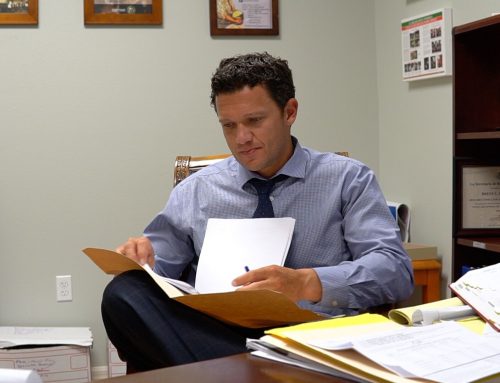Many cases never make it to the courthouse. That is because parties are typically motivated to settle without enduring the time and expense involved in a legal court case. Filing a personal injury lawsuit is considered the last resort after all other options are exhausted.
The first step would be filing of a claim with the insurance company. It is recommended that unless your case is very simple that you retain legal advice. Most people just do not know what is a fair offer of reimbursement, and legal counsel can help you to determine and negotiate a fair settlement. If you can’t come to an agreement through negotiation, you may need to consider a lawsuit.
The basic steps in a formal personal injury lawsuit filed include:
- File your complaint: If not agreement can be reached, you may decide to file a lawsuit against the other parties in the case, including the insurance company and the other party (such as the other driver, or the owner of a building where you fell.) Once the complaint is filed, all named defendants will be served a copy of the document.
- Wait for the Answer: The defendants will provide an answer or demurrer, which is a special pleading. A demurrer states that even if the allegations are true, the plaintiff is not entitled to pursue the claim through the court system.
- File of Cross-Complaint: The defendant may file a counterclaim or cross complaint in the matter.
- Perform Discovery: Discovery is the fact0finding process, and can include formal interrogatories, informal interrogatories, depositions, experts testimony, and other requests for evidence. Either party may make a motion to the court to restrict aspects of recovery, compel compliance with the discovery process, or resolve issues and confrontations which occur during the discovery process.
- Pre-trial Proceedings: Case management and settlement conferences, referrals by the court to mediate the case, recommendations for arbitration, preliminary motions regarding evidence admission for the trial, pretrial briefs and jury instructions if required. Did You Know? Briefs are statements which outline the facts and applicable law regarding the issues to be presented during the trial.
- Judge or Jury Trial: This includes any required jury selection, opening statements, witness and evidence presentation through examination and cross-examination, closing statements, and jury instructions from the judge.
- Judgement: Depending on the case, a judge or jury will determine the outcome of the case. This will be followed by any post-trial motions for mistrial if applicable, or a motion for judgement reconsideration. Either party may also choose to appeal the judgement as well.
Although your case may never make it all the way to a jury trial, it is important to understand the process if need be. But personal injury lawsuits can be very complex – even if you think it should be an easy decision. There are many aspects of your case that you should be aware of, from document preparation to social media protocol. In order to ensure that your case has the best opportunity for a favorable settlement, call the team at Probinsky & Cole. Whether negotiating with the insurance company or representing you in a legal battle, we are here to assist with your personal injury filing.








